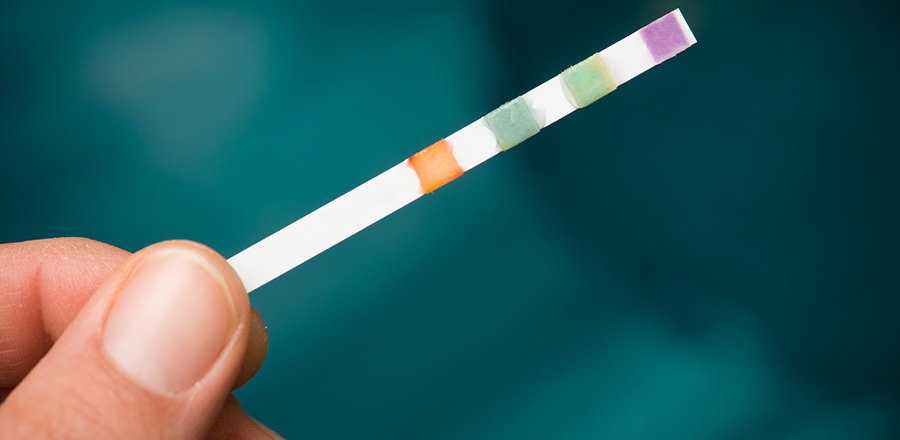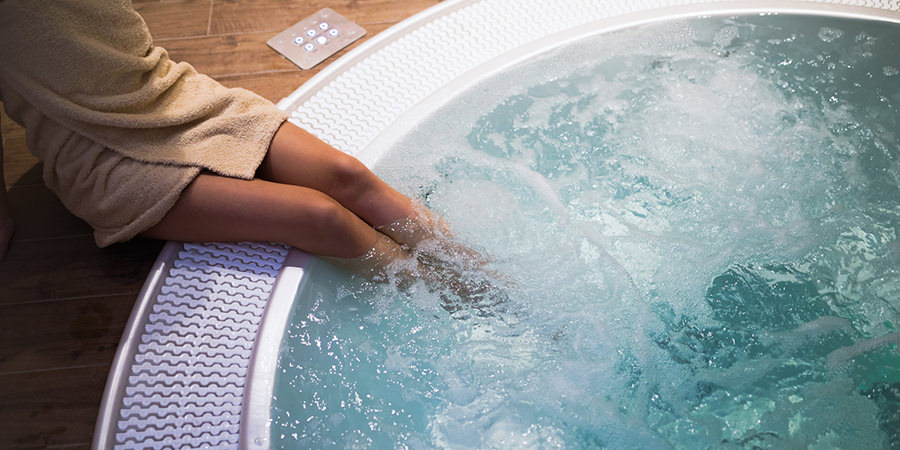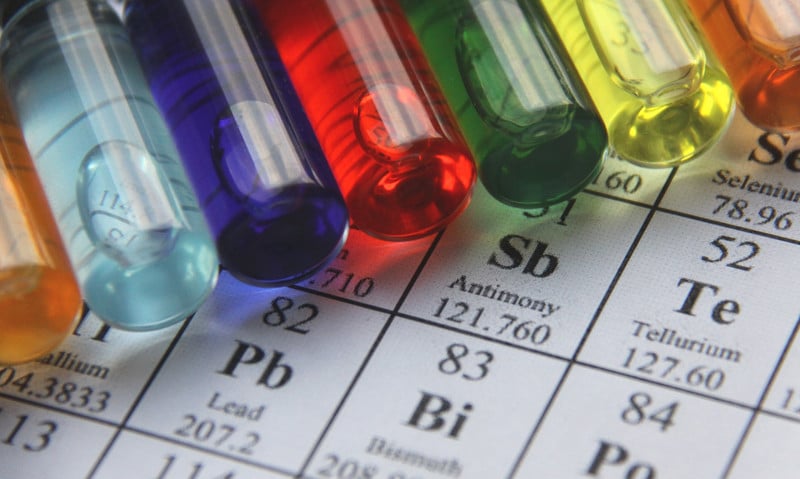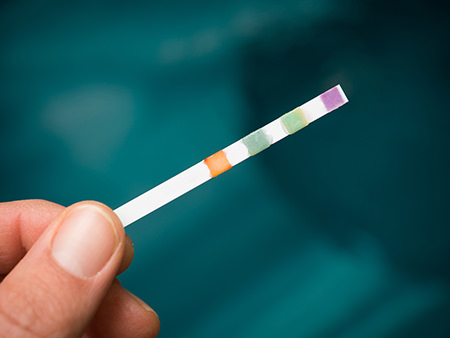
I always think that the term to shock your hot tub is fairly amusing. I’m not sure how you would go about actually shocking your hot tub, maybe getting into it without your swimming costume on would do the trick and completely shock it! But, of course, shocking your hot tub or shock dosing your hot tub actually refers to adding chemicals to keep the water clean and fresh. So how do you shock dose a hot tub? Why do hot tubs need shock dosing and when do you have to do this? I decided to check out the facts and here is what I discovered:
How do you shock dose a hot tub? Add a shock dose chemical treatment to your hot tub after a water change, after it has had very heavy usage, if the water doesn’t look clear and in any case at least once a week. Before shock dosing your hot tub make sure that your pH level is correct then work out the amount of shock dose chemical to add by checking the capacity of your hot tub and reading the manufacturers instructions. Sprinkle the chemical into the hot tub whilst the water is circulating and with the cover off. Test the water and wait until the chlorine level is between 3 and 5 parts per million before entering the hot tub.
So, shock dosing your hot tub is not a particularly complicated procedure but you do need to know exactly when to do it and what type of shock dose to use for it to be effective.
What is shock dosing a hot tub?
Shock dosing a hot tub means that you periodically add a large boost of chemical to ensure that the water is kept sparkling fresh and clean. If your water doesn’t smell all that fresh or is starting to look a little bit cloudy then it might be a good idea to consider giving it a shock dose to restore it. You might also consider giving your hot tub shock dose after a particularly heavy period of use. When the hot tub is full of a large number of bathers, or is used for a long period of time, the level of contaminants in the water increases. Often this increase can be beyond what the regular sanitizer in the water can cope with and so the water starts to look cloudy and may start to harbour harmful bacteria and algae. It’s therefore important, after a period of heavy usage, to shock your hot tub. This will give a boost to the sanitization level in the water, clear it and restore it to its previous state.
Even if your hot tub doesn’t get periods of very heavy use it can be a good idea to shock your hot tub on a weekly basis anyway to ensure that the water stays fresh and clear. You will also want to shock your hot tub if it has been left unused for a while and the water has just been standing there and also when you change the water.
Find out all about a great and simple hot tub maintenance schedule this post.
What does shock dosing your hot tub actually do?
Broadly speaking, shocking your hot tub basically just cleans up the water but, in more detail, there are four main areas that the shocking treatment will address!
- Removing organic matter from the hot tub. After periods of heavy use, your hot tub water may well be saturated with organic matter. This is a rather unpleasant situation as essentially the organic matter can be bits of skin, hair, dirt, faeces and any other microscopic bits of dirt that stick to the human body and are then deposited into the hot tub water. Using a shock treatment will remove this organic matter, you can help at the outset by showering in plain water before going into the hot tub as this will remove some of the dirt in the first place.
- Removing harmful bacteria and algae from the water. If you are using a chlorine or bromine shock treatment then it will be highly effective at removing harmful bacteria and algae from the water. If you are using a non-chlorine shock then this will not be the case. Obviously having water that is clear of harmful bacteria and disease is vital for the health and wellbeing of the bathers in your hot tub so this needs to be a priority. This is where regular shock treatments come in and using them properly will ensure that your hot tub is safe.
- Removing bromamines and chloramines. As either bromine or chlorine works to clean your hot tub water they remove the contaminants and, as a by-product, produce either bromamines or chloramines. Adding a shock treatment breaks down the bromamines and chloramines so that they can be easily removed from the water.
- Reactivating bromine. If you are using bromine as your main sanitizer then adding a bromine shock treatment once a week reactivates the sanitizer and re-energizes it helping to keep your water fresh.
So essentially, through a number of different ways, shocking your hot tub not only cleans the water and removes contaminants from it but it also reactivates your longer-term sanitizer as well. Adding a shock on a regular basis is a little bit like a boost or a chemical reset for your hot tub.

What types of hot tub shock treatments are there?
There are two types of shock treatments in common use, chlorine-based shock treatments and non-chlorine based shock treatments. Each one has its own strengths and weaknesses and most hot tub owners, particularly if you are using a chlorine-based sanitisation system, will use both of them in combination. Even if you are using a less chemically based sanitisation solution such as a saltwater system or even a UV system you will probably find that you will still need to use a shock treatment on a periodic basis.
Chlorine shock treatment – a chlorine shock treatment is used primarily for killing bacteria and sanitizing the water. It is like a mega boost of chlorine for your hot tub and as such should be used relatively sparingly. You will probably only need to use a chlorine-based shock treatment when you have replaced your water or if your hot tub has been out of use for a long period of time. A chlorine shock treatment is chemically very strong and can actually corrode parts of your hot tub’s plumbing if you overuse it so only use it sparingly and when absolutely necessary.
Non chlorine shock treatment – you can use a non-chlorine shock treatment more frequently and this is the one that you should use after your hot tub has been through a period of heavy use or at least on a weekly basis. A non-chlorine shock treatment won’t kill or remove any bacteria but it will oxidize the water and remove contaminants as well as revitalize your sanitiser. Due to the fact that it does not contain chlorine it is much less chemically powerful than a chlorine sanitizer and can be used more frequently. There isn’t a risk of damage to your hot tub and there is less of an issue with your water becoming over-chlorinated and unsafe to enter.
How do you shock treat a hot tub?
Actually doing a shock treatment for your hot tub is relatively straightforward. If you get into the habit of doing it on a regular basis then it will only take a few moments and you will increase the probability of your hot tub water staying clear and fresh with a minimum amount of effort. It can be a good idea to do a shock treatment after each hot tub session. It only takes a few moments, particularly if it becomes part of your routine, and it will mean that your hot tub is fresh and ready for the next time you want to use it. Here are the steps that you need to follow:
Check your pH levels: this first step is vitally important as if your PH levels are out of the range of between 7.4 and 7.6 the shock treatment will be significantly less effective. You should be checking your water chemistry on a regular basis anyway so hopefully, it won’t be too far off. To test your water you will need a hot tub test strip which you simply dip in the water and compare the colour it changes to with the chart on the side of the test strip pack. Depending upon the result you will either need to decrease or increase the PH level in the hot tub until it is between 7.4 and 7.6.

Remove the cover – whilst the hot tub is undergoing the shock dosing treatment it’s important that the cover is left off. This allows the hot tub to breathe and for chemical vapours to disperse safely. If your cover is left on too frequently while shock dose then you will find that the underside of the cover becomes stained and will suffer due to the high chemical concentration and heat.
Switch off the jets – it’s important to keep the water circulating around so leave the pumps running but switch off the jets. If the water is being aerated too strongly or is bubbling too much then it becomes harder for the shock treatment to work. The more air is introduced into the water the less effective the shock treatment becomes so this is an important step. However, keeping the water moving around and circulating is also important so that the shock treatment is dispersed throughout the whole hot tub.
Read the instructions on the packet – follow the instructions very carefully on the packet of the shock treatment. It’s particularly important that you are completely clear about how many litres of water your hot tub holds as this will affect the amount of shock treatment that you need to put in it. You should be able to find out the water capacity of your hot tub from your handbook or from the manufacturer’s website or possibly from the information panel inside the service area. Once you have worked out exactly how much chemical you need to add you then simply sprinkle it evenly over the surface of the water. Be careful to avoid getting it on your hands or in your eyes as, particularly in the case of a chlorine-based shock dose treatment, you are handling a powerful chemical.
Wait after shock dosing – after adding the shock dose you need to wait for a period of between 20 and 30 minutes before switching the pump off and putting the hot tub cover back on. It takes this amount of time for the shock dose chemical to work and for it to be dispersed fully throughout the hot tub. Throughout this period the hot tub may give off chemical vapours so remember to keep the hot tub cover off as well.
How long do you have to wait after a shock treatment before getting into your hot tub?
The ideal scenario is for you to get into the habit of giving your hot tub a shock treatment after you have used it so that it has time to recover and will be fresh and ready for your next hot tub session. However, if you need to shock your hot tub and then get into it in a hurry there are a few considerations to bear in mind.
Firstly, with a non-chlorine shock, you can in theory at least get into the hot tub quickly after the treatment without any adverse effects. You really need to allow between 20 minutes and half an hour for the treatment to work and then you can safely get into the hot tub. In an ideal world, I would allow a little longer to make sure that the shock treatment has had time for maximum effect and to be certain that it has dispersed fully throughout the hot tub.
With a chlorine shock treatment, you need to be significantly more careful. You will need to allow the same 20 to 30 minutes or so for the shock treatment to work and after this time has elapsed the chances are that it will not be safe at all to get in the hot tub. The chlorine levels will be significantly higher than the safe recommended level and you will risk skin irritation, eye irritation and possible respiratory difficulties if you do get into the hot tub. You need to test the amount of chlorine in the water. You will probably find that it is significantly higher than the safe recommended the level of 5 parts per million. If this is the case then you need to wait for the chlorine levels to dissipate. This is really just a matter of time and could take anything from 20 or 30 minutes to 24 hours or so for the hot tub to become safe to re-enter. Retest the water at regular intervals to ascertain how quickly the chlorine levels are decaying. Only when you have a reading of the safe level should you consider getting in the hot tub.
You can read more information about getting safe chlorine levels in your hot tub here.
Related Questions:
Can I use pool shock in my hot tub? It is not a good idea to use a pool shock treatment in your hot tub. This can be tempting as pool chemicals are often less expensive but they are intended for a different use. A pool operates at a much lower temperature than a hot tub and also the proportions of bathers and to the volume of water is significantly lower. This means that a pool shock treatment will work in a different way and will not be effective in a hot tub. It is important to only use good quality specific hot tub chemicals in your hot tub.
Can you shock a hot tub with bleach? Apparently, it is possible to use household bleach to shock your hot tub as long as it isn’t coloured or scented. There are problems with this, not least the fact that the bleach could well totally throw your PH levels out. Also, why on earth you would want to throw household bleach into your hot tub and then consider sitting in it is completely beyond me and I would completely recommend not doing this. It is a far better plan, even though it is a little more expensive, to use a proper hot tub shock treatment and to follow the instructions carefully. It seems to me that’s the possibility of skin irritation and damage due to sitting in a bath of bleach is a risk that simply is not worth taking.

